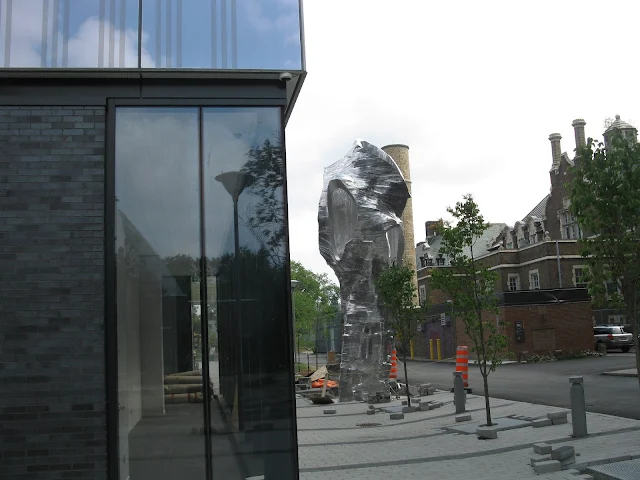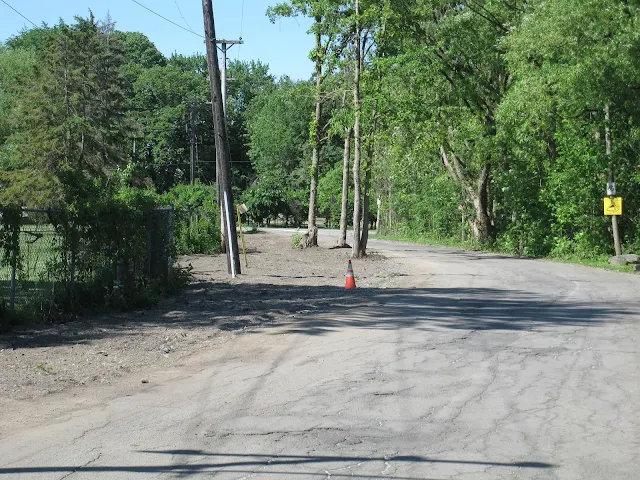Poetry is the soul's DNA, the memory of the human race. Poetry, not prose, not history, not fiction or drama or short stories or religious texts, but poetry is the expression of the collective unconscious. This DNA is the container and memory of everything humanity has done or will do, the Akashic record of everything that has happened in the past and will happen in the future; it does not recognize divisions of time into past, present, and future. Poetry is the single collective entity, the body of work, the distinct expression of the soul's DNA. Each poem is a separate expression of some aspect of the soul, the archetypes, emotions, intellectual musings, shared by all people living, to be born, and those that have died. It is both an expression of the Anima Mundi, the spirit of the world, and a celebration of humanity.
Thursday, September 17, 2020
Thursday, September 10, 2020
St. Stephen's Anglican Church in Lachine, Quebec
I used to visit Lachine, Quebec, fairly regularly. It's only fifteen minutes from where I live in Montreal but it always feels like I am on holiday when there. You can walk along the Lachine canal, visit different museums, eat at some terrific restaurants, go fishing at the lighthouse, walk along Lac St-Louis... on one of these walks I came across St. Stephen's Anglican Church. This is the oldest Anglican church on the Island of Montreal; founded in 1822, construction of the church was completed in 1831. The church is located at 25 12th Avenue in Lachine, behind the Couvent des Soeurs Ste-Anne, which I believe is now a college. I made this video in the spring of 2013.
Monday, August 31, 2020
The longevity of glass buildings
I like older buildings that are substantial and that are built to last, we still have many of these older buildings in Montreal. The new Science Hub on the Loyola Campus of Concordia University is a striking addition to the university, it is what students and faculty expect and want in a new building. There is no point in constructing an old fashioned brick and concrete building, it would be incongruous and inconsistent with a contemporary campus. It would also be prohibitive in terms of cost. So, my hesitancy regarding this new building is just my taste in architecture; however, I also question the future of the building in a post-pandemic world, I wonder if buildings like this will be needed. Furniture has been carried into the new science building, it's ready to be occupied, but I'm not sure if they'll have any students on-campus this year due to the pandemic. Everything is changing, not for the better but just changing. The Science Hub doesn't look like it was constructed to last; I suspect that in a hundred years, if this building is still standing, people will scratch their heads and say "what were they thinking?" But do we even want buildings to last? Or are buildings like Ikea furniture, they look good for a while, they're functional, but they're still just made of laminated particle board, future junk. No one had the idea of built-in obsolescence when they were constructing our many older buildings in Montreal; these older buildings add much to the quality of life in this city, they give us a feeling of substance, workmanship, creativity, and our culture and history. This is not the case with the Science Hub building, it could be located in any large city, in Toronto or elsewhere.
Tuesday, August 4, 2020
The Garden in early August
Wednesday, July 22, 2020
Saturday, July 18, 2020
New Sculpture on Loyola Campus
Now I remember what the sculpture reminds me of, it is the Golem from Jewish mythology; this seems appropriate considering the age in which we live.
Saturday, July 11, 2020
Walking to Meadowbrook Golf Course
Now compare the road as it was with my photographs of what it looks like now:
Here is Google Street View over a twelve year period, 2007 to 2019: https://www.google.com/maps/@45.4564534,-73.6684001,3a,75y,208.22h,94.22t/data=!3m7!1e1!3m5!1sY1druHKghkiV9eiUA42kKQ!2e0!5s20070901T000000!7i3328!8i1664
Here is the road today:

















































